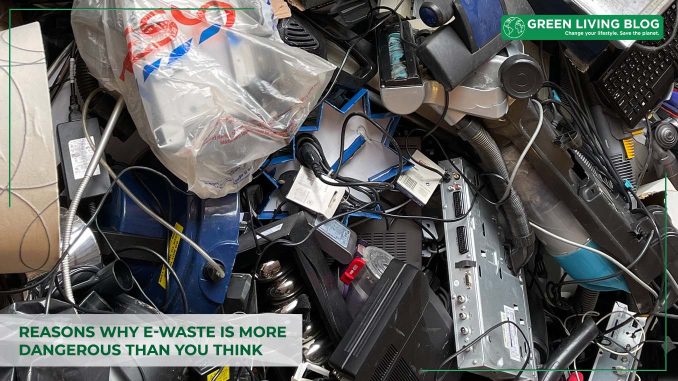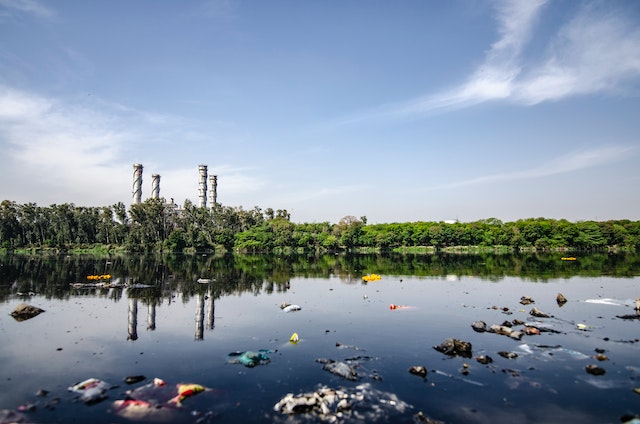
Our consumerist society doesn’t seem to understand that e-waste contains dangerous chemicals, such as lead and mercury that can find their way into the soil, rivers, and streams on our planet, leading to dangerous pollution.
But there are more reasons to be cautious with e-waste and to recycle electronic devices in the appropriate way so read on.
1. Electronic Waste Causes Disturbances in Plant Root Microbiota
Although the natural world is abundant with an extensive array of microorganisms, it is essential to note that only a limited number of these microbes have the potential to negatively impact the health and overall welfare of people, animals, and plants. The overwhelming majority of these microbes have a benign nature or actively contribute to favourable outcomes in diverse ways.
The beneficial bacteria in the soil play a pivotal part in the nutrient cycling process. They establish a mutually beneficial association with plant roots, promoting activities like nitrogen fixation, breakdown of organic matter, avoidance of root diseases, and supply of easily accessible nutrients for plant development.
Unfortunately, the continuous disposal of electronic waste can introduce hazardous substances into the soil, endangering the survival of beneficial root bacteria. Moreover, the presence of heavy metals and electrical components such as lead, mercury, selenium, copper, and nanoparticles inside e-waste presents immediate hazards to the well-being of plants upon infiltration into their tissues. The presence of disruptive agents hurts the natural microbial equilibrium, resulting in the decline of beneficial species and disturbances in nutrient cycling, which has implications for plant development.
Consequently, the ramifications of the buildup of e-waste and its impact on the surrounding habitats are evident via a range of manifestations, such as inhibited plant development, deficits in essential nutrients, and toxicity in plants. Undoubtedly, these occurrences significantly impact the disruption of atmospheric air circulation and soil fertility degradation, whether promptly or gradually.

2. Electronic Waste Disrupts the Ecological Order of the Food Chain
The disruption of plant root homeostasis and subsequent decline in beneficial soil microbes may have cascading effects on other creatures, such as earthworms, which depend on this symbiotic association for nutrition. Earthworms may encounter a challenging situation when they are at risk of experiencing severe hunger or dehydration, especially in soil environments that lack the water retention capacities often facilitated by helpful microorganisms.
Similarly, the adverse consequences of e-waste pollution and the disruption of nutrient cycling in the plant community might also affect animals that rely on these plants for survival. The sequence of events described has the potential to cause herbivores to experience starvation, which in turn could have a cascading effect on carnivores that depend on these herbivores for sustenance. This could result in a notable decrease in food availability for carnivores, leading to various outcomes such as increased mortality rates or the possibility of migration.
3. E-waste contaminates Underground and Surface Water
E-waste tends to extend beyond its original disposal location. This is due to the ability of its metallic constituents and nanoparticles to spread and permeate various water bodies via many mechanisms.
Fundamentally, erosive forces and flooding can displace metals and nanoparticles from electronic waste, conveying them into adjacent water bodies. Moreover, the infiltration of heavy metals into the soil may lead to the pollution of underground water reservoirs, ultimately resulting in the potential dissemination of these contaminants into larger aquatic systems.
A very concerning situation emerges when metals linked to e-waste undergo dissolution in water, resulting in their integration with the aqueous medium. Electronic waste disposal into the environment hurts the aquatic ecology, even for those who do not directly drink surface water.
In the final analysis, the ramifications of e-waste pollution have far-reaching implications in the aquatic domain, resulting in reduced fish productivity and the toxicities of aquatic flora. The impacts mentioned above arise due to the increased concentration of heavy metals and the loss of oxygen in the water, thereby presenting a potential hazard to the intricate equilibrium of aquatic ecosystems.

4. Accumulation of Harmful Substances in Body Organs
The issue of lead and mercury poisoning represents a significant and concerning health problem in the modern era. Although improvements in the fuel economy of vehicles have contributed to reducing their emissions into the environment, it is essential to acknowledge that the combined effects of mishandling e-waste may substantially impact human health.
The bioaccumulation process starts with plants’ uptake of harmful substances, which then assimilate them into their tissues. In aquatic conditions, fish are highly susceptible to accumulating significant quantities of lead inside their tissues.
As a result, both animals and people inadvertently ingest a fraction of these harmful compounds when they eat polluted vegetables or seafood. Over time, the accumulation of these compounds occurs inside the human body, eventually reaching levels that might endanger crucial organs, particularly the kidneys and the liver.
5. E-Waste’s Link to the Onset of Cancer and Fatal Ailments
The harmful effects on crucial bodily organs might lead to various underlying medical conditions and deadly ailments in more extreme instances. However, the extended exposure to e-waste impacts adults and poses a substantial health risk to newborns, who are particularly susceptible owing to their immature immune systems.

Regrettably, there have been documented cases of stillbirths due to exposure to e-waste. An example of a health concern associated with e-waste is lead poisoning, which has been shown to cause long-term hearing damage in children.
In addition, the World Health Organization has issued cautions about exposure to e-waste, highlighting possible ramifications, including DNA damage, disturbances in thyroid function, respiratory illnesses, and the onset of terminal ailments such as cancer and cardiovascular diseases.
The lack of attention given to the problem of electronic waste is a significant obstacle in humanity’s efforts to combat environmental degradation, global warming, the prevalence of fatal diseases, and the endangerment of many species.
Conclusion
Given the significant environmental risks associated with e-waste, addressing these concerns, and implementing measures to minimize its adverse effects and avert more ecological harm is crucial. To achieve this objective, it is recommended to use proactive strategies, such as engaging in recycling electronic waste using technologies like emew. Another feasible path to examine is the exploration of methods for repurposing e-waste into helpful home equipment.
![]()
Author Profile
- Online Media & PR Strategist
- Blogger and Educator by Passion | Senior Online Media & PR Strategist at ClickDo Ltd. | Fascinated to Write Lifestyle Blogs in News & Education I have completed a journalism summer course at the London School of Journalism and manage various blogs.
Latest entries
 LeisureApril 16, 202510 Best Green UK Hotels for Eco-Tourists
LeisureApril 16, 202510 Best Green UK Hotels for Eco-Tourists Best practicesApril 14, 20258 Best Ways to Reduce Your Carbon Footprint
Best practicesApril 14, 20258 Best Ways to Reduce Your Carbon Footprint Green Expert GuidesMarch 28, 2025Lisbon Living: Where Sustainable Charm Meets Urban Energy
Green Expert GuidesMarch 28, 2025Lisbon Living: Where Sustainable Charm Meets Urban Energy EnvironmentJanuary 21, 2025Buying Eco-Friendly Homes: 6 Eco Questions to Ask Your Real Estate Agent
EnvironmentJanuary 21, 2025Buying Eco-Friendly Homes: 6 Eco Questions to Ask Your Real Estate Agent






Leave a Reply
You must be logged in to post a comment.